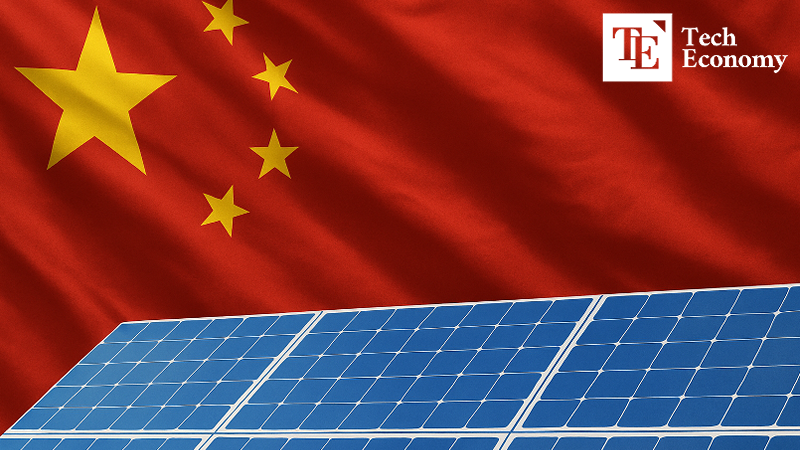
This article was independently developed by The Economy editorial team and draws on original analysis published by East Asia Forum. The content has been substantially rewritten, expanded, and reframed for broader context and relevance. All views expressed are solely those of the author and do not represent the official position of East Asia Forum or its contributors.
Read More
This article is based on ideas originally published by VoxEU – Centre for Economic Policy Research (CEPR) and has been independently rewritten and extended by The Economy editorial team. While inspired by the original analysis, the content presented here reflects a broader interpretation and additional commentary. The views expressed do not necessarily represent those of VoxEU or CEPR.
Read More
AI 热潮中独自迎来“业绩震惊” 第二季度清算未来损失 下半年业绩改善预期扩大 三星电子平泽园区内,员工穿着无尘服举起晶圆展示。/照片=三星电子提供 三星电子2025年第二季度(4至6月)业绩大幅低于市场预期,创下“业绩震惊”。
Read More
From Jakarta’s toll roads to Tokyo’s Marunouchi subway, rush-hour traffic has thinned in ways few labor economists dared predict. Bureau of Labor Statistics microdata released in February 2025 shows that the share of Asian women who reported teleworking at least once a week jumped from 7% in 2019 to 32.5% by late 2024—a near-quadruple leap matched only by wartime mobilization in modern economic history.
Read More
供应过剩、竞争白热化:中国电动车市场陷入淘汰赛 “129家品牌中仅15家能存活”的预判浮出水面 价格战愈演愈烈,大多数企业难以盈利 在供应过剩与市场饱和中陷入激烈竞争的中国电动车市场,未来五年内仅15家车企将幸存于129个品牌之中,这一预期揭示出电动车产业正面临严峻洗牌。当前正扩散的中国电动车行业危机,预计将导致大量企业被淘汰,到2030年,仅剩下现有八分之一数量的15家企业。
Read More
This article was independently developed by The Economy editorial team and draws on original analysis published by East Asia Forum. The content has been substantially rewritten, expanded, and reframed for broader context and relevance. All views expressed are solely those of the author and do not represent the official position of East Asia Forum or its contributors.
Read More
勒紧裤腰带的微软,再裁员9,000人 “削减非AI岗位,加大投资” 美科技巨头年内已裁员6.3万人 图片=微软 正在对人工智能(AI)进行大规模投资的微软(Microsoft)在最近几个月内已进行第三轮大规模裁员。本次裁员规模约为全球员工总数的4%,即9,000人。继5月裁员约6,000人之后,短短两个月累计裁员已达15,000人。
Read More
忧虑终成现实,英国新手岗位减少30% AI应用与经济不确定性共同推动招聘下降 全球企业扩大AI替代人力的计划 自生成式人工智能(AI)ChatGPT问世以来,新入职员工的岗位约有三分之一消失。这是因为AI取代了重复性和日常性的初级工作岗位。此外,用人单位在保险费用上的负担加重以及新劳动法规的出台等,也被认为是阻碍雇佣的原因之一。
Read More
This article was independently developed by The Economy editorial team and draws on original analysis published by East Asia Forum. The content has been substantially rewritten, expanded, and reframed for broader context and relevance. All views expressed are solely those of the author and do not represent the official position of East Asia Forum or its contributors.
Read More
Universities now channel almost $14 million every hour into public cloud infrastructure, a spending line that already exceeds the combined global budgets for faculty development and student mental health programs. Data centers consume 415 terawatt-hours of electricity annually, a demand curve projected to surpass Japan’s national consumption before 2030. Conventional wisdom treats those figures as the inevitable price of artificial intelligence progress.
Read More
北韓透過加密貨幣駭客攻擊規避西方制裁 建立專業駭客培訓體系 培養國家級網攻人才 韓國資安體系鬆散 如此應對是否足夠? 在全球打击网络犯罪的战线上,朝鲜如今已稳坐加密货币犯罪的中心。据2025年上半年数据显示,全球数字资产盗窃总额中超过一半归因于平壤主导的网络攻击。依托国家资助的黑客菁英培养体系,朝鲜将其日益精进的网络攻击能力,转化为规避制裁的战略性工具,动摇全球加密资产市场。国际社会正竞相采取对策,遏制这个“流氓国家”的扩张性网络行动。
Read More
巨额补贴引发产能过剩恶性循环 国家主导型发展战略走到尽头 “超高速增长时代已终结”的警告愈发强烈 中国光伏产业正陷入生存危机,既有美国对其征收惩罚性关税的外部压力,也有国内市场产能过剩的内忧。在缺乏技术准备的情况下,过度依赖政府补贴来追求规模扩张的战略,正在让曾自诩为绿色转型先导者的中国,不得不为全球供应过剩的局面承担责任。如今,这种责任正以产业链整体破产连锁的形式迅速显现。
Read More
On a raw Tuesday morning this past April, two lines of data crossed in a way every curriculum committee should heed. First, Pew reported that 37% of American adults now begin a web search directly inside ChatGPT rather than using Google (Pew Research Center, 2025a). Second, a Vectara/Hugging Face leaderboard quietly showed that even the best model, GPT-4o-mini, still invents facts in 1.7% of answers—and in domain-specific writing, that figure can skyrocket past 40%.
Read More
This article was independently developed by The Economy editorial team and draws on original analysis published by East Asia Forum. The content has been substantially rewritten, expanded, and reframed for broader context and relevance. All views expressed are solely those of the author and do not represent the official position of East Asia Forum or its contributors.
Read More
This article was independently developed by The Economy editorial team and draws on original analysis published by East Asia Forum. The content has been substantially rewritten, expanded, and reframed for broader context and relevance. All views expressed are solely those of the author and do not represent the official position of East Asia Forum or its contributors.
Read More
This article is based on ideas originally published by VoxEU – Centre for Economic Policy Research (CEPR) and has been independently rewritten and extended by The Economy editorial team. While inspired by the original analysis, the content presented here reflects a broader interpretation and additional commentary. The views expressed do not necessarily represent those of VoxEU or CEPR.
Read More
This article is based on ideas originally published by VoxEU – Centre for Economic Policy Research (CEPR) and has been independently rewritten and extended by The Economy editorial team. While inspired by the original analysis, the content presented here reflects a broader interpretation and additional commentary. The views expressed do not necessarily represent those of VoxEU or CEPR.
Read More
When ChatGPT's blue reply light blinks, the planet's electricity meter begins to sprint. That small but telling synchrony captures the hard pivot in humanity's digital story: a decade ago, we lauded the "cloud" as a weightless substitute for carbon-heavy travel and paper; in 2025, we discovered that the computational clouds cast a widening carbon shadow. Unless we turn the engines of artificial intelligence (AI) into relentless misers of joules, decarbonization promises will evaporate in a plume of GPU exhaust.
Read More
This article is based on ideas originally published by VoxEU – Centre for Economic Policy Research (CEPR) and has been independently rewritten and extended by The Economy editorial team. While inspired by the original analysis, the content presented here reflects a broader interpretation and additional commentary. The views expressed do not necessarily represent those of VoxEU or CEPR.
Read More
This article is based on ideas originally published by VoxEU – Centre for Economic Policy Research (CEPR) and has been independently rewritten and extended by The Economy editorial team. While inspired by the original analysis, the content presented here reflects a broader interpretation and additional commentary. The views expressed do not necessarily represent those of VoxEU or CEPR.
Read More










